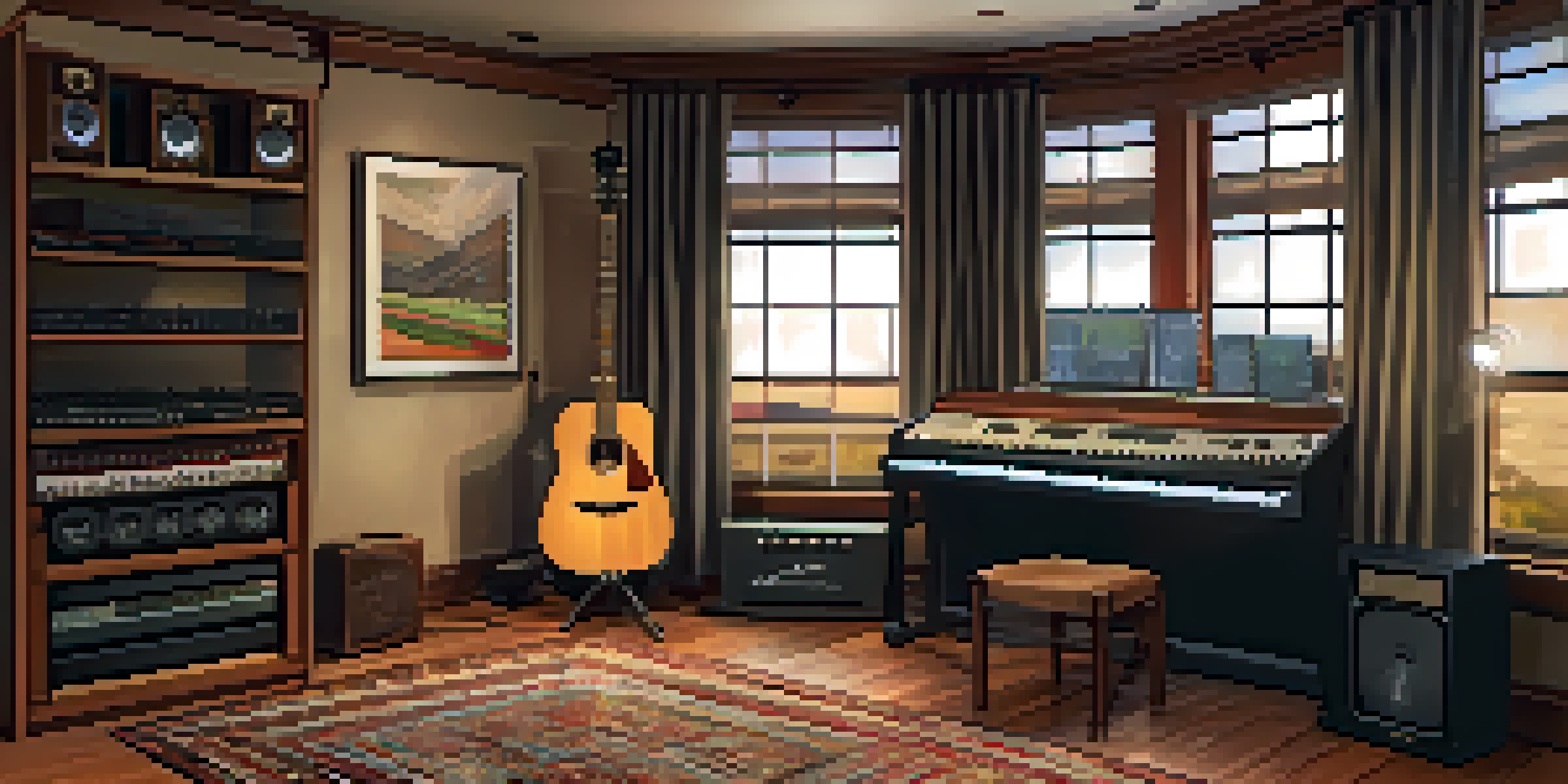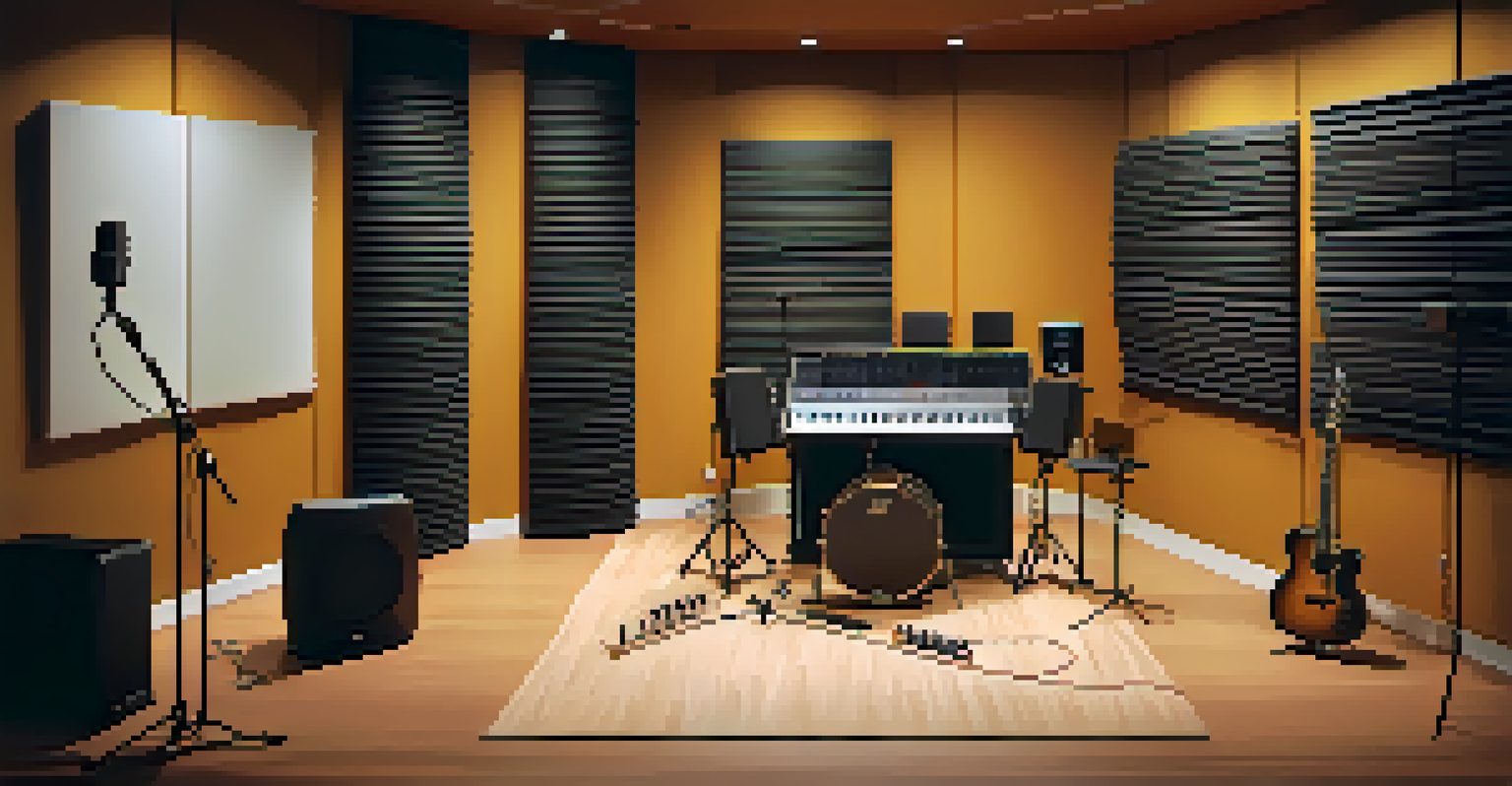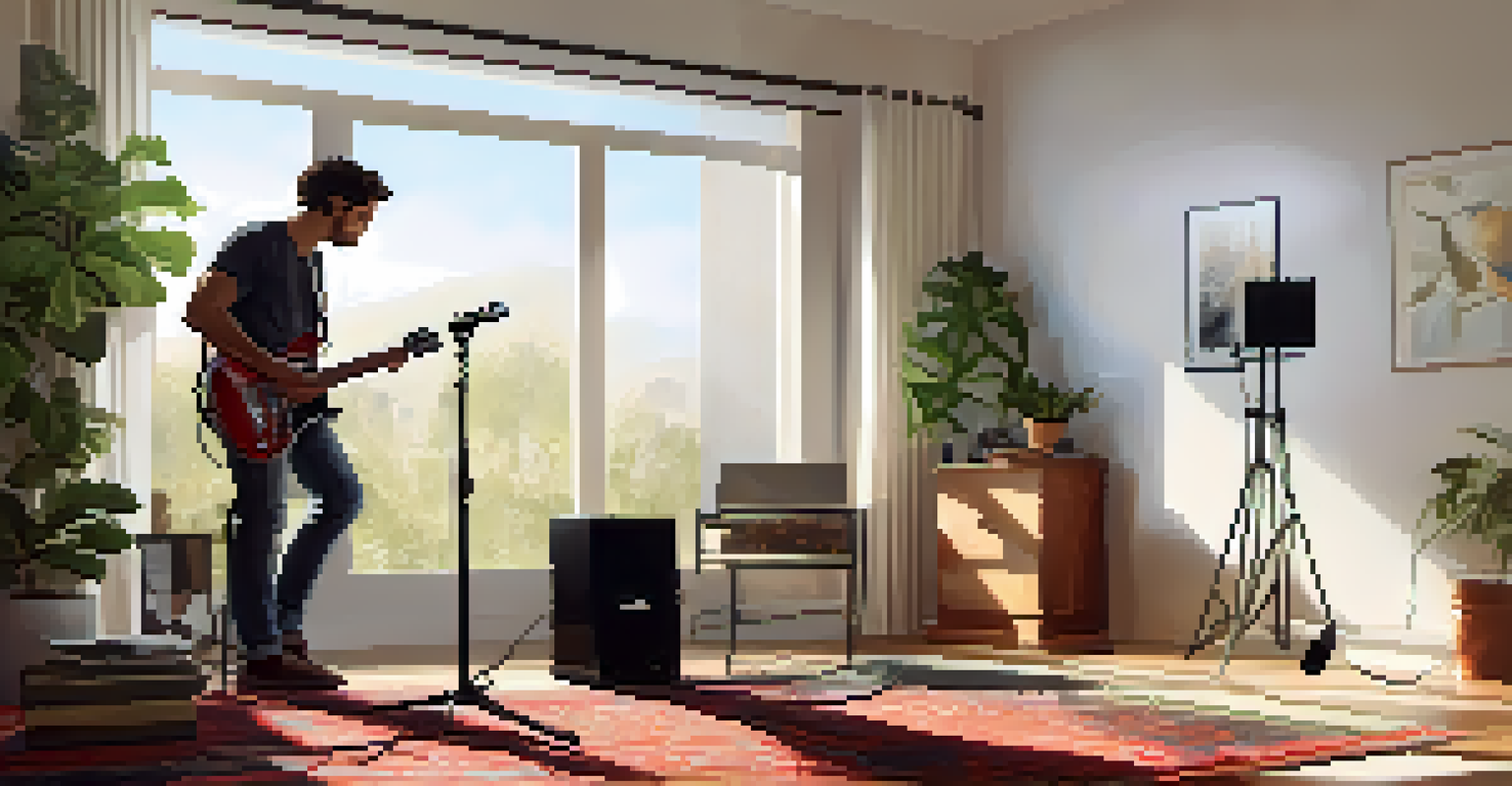Using Room Acoustics to Enhance Guitar Recording Quality

Understanding the Basics of Room Acoustics
Room acoustics refers to how sound behaves in an enclosed space. It encompasses factors like reflections, absorption, and diffusion, which all affect the quality of sound. When recording guitar, the acoustics of your room can make a huge difference in the final output.
Acoustics is the science of sound, and the way sound interacts with environments is crucial for achieving high-quality recordings.
Imagine playing your guitar in a large, empty hall versus a small, cluttered room. The sound will bounce around differently in each space, leading to varying qualities in your recording. A well-designed room can enhance the warmth and clarity of your sound, while a poorly designed room might create muddiness or echoes.
Understanding these basic principles can help you make informed decisions about how to set up your recording space. By paying attention to the room’s acoustics, you can significantly improve the quality of your guitar recordings.
Identifying Problematic Acoustic Features
Every room has its unique acoustic characteristics, some of which can be detrimental to recording. Common issues include excessive reverb, standing waves, and flutter echoes. Identifying these problems is the first step towards improving your recording environment.

For instance, if you notice that your recordings sound overly boomy, it might be due to low frequencies bouncing off parallel walls. On the other hand, a bright, harsh sound could indicate too much reflection from hard surfaces. Taking the time to analyze your room can help you pinpoint these acoustic flaws.
Room Acoustics Matter
The acoustics of your recording space significantly influence the quality of your guitar recordings.
By recognizing these problematic features, you can start making adjustments to create a more favorable recording environment. This proactive approach can lead to clearer, more professional-sounding guitar tracks.
Utilizing Acoustic Treatment Solutions
Once you’ve identified the acoustic issues in your room, the next step is to treat them. Acoustic treatment options include panels, bass traps, and diffusers, each designed to address specific problems. For example, bass traps help control low-frequency buildup, while panels can reduce mid and high-frequency reflections.
The room is an instrument, and the way we treat the acoustics of that room greatly affects the performance of our recordings.
Think of acoustic panels as the sound-absorbing sponge of your room. Strategically placing these around your recording area can help minimize unwanted echoes and create a more balanced sound. Bass traps, often placed in corners, will manage those low frequencies that tend to get out of control.
By implementing these treatment solutions, you can create a more controlled environment for your guitar recordings. This not only enhances the sound quality but also allows for greater creativity during the recording process.
Choosing the Right Recording Location
The location within your room where you record can make a significant difference in sound quality. The positioning of your guitar, microphone, and even your own body can affect how sound waves interact with the room. Experimenting with different locations can lead to discovering the sweet spot for optimal recordings.
For example, placing your microphone too close to a wall can result in unwanted reflections, while positioning it too far away might make the sound thin and distant. Ideally, you'll want to find a balance that captures the richness of your guitar without excessive interference from the room.
Identify Acoustic Issues
Recognizing common acoustic problems, such as excessive reverb and standing waves, is essential for improving your recording environment.
Taking the time to explore various recording locations within your space can help you achieve that perfect sound. It's all about trial and error, so don’t hesitate to move around and test different setups.
Microphone Placement Techniques for Best Results
Microphone placement is crucial when it comes to capturing the true essence of your guitar sound. Different placements can highlight various tonal qualities, so understanding how to position your microphone is key. A common technique is to place the mic near the 12th fret, where the sound tends to be balanced and clear.
You can also experiment with distance; moving the mic closer can enhance warmth, while placing it further away might capture more room ambiance. It's like finding the right angle in a photograph; the right mic placement can make all the difference in your recording.
By mastering microphone placement techniques, you can significantly improve the quality of your guitar recordings. This attention to detail can elevate your sound from good to exceptional.
Incorporating Natural Elements for Acoustic Balance
Sometimes, the best acoustic treatment comes from incorporating natural elements into your recording space. Adding rugs, curtains, or even furniture can help absorb sound and reduce unwanted reflections. These elements not only enhance the acoustics but also make your space feel more inviting.
For instance, a thick rug can dampen high frequencies and prevent echoes, while curtains can absorb sound when closed. Even bookshelves filled with books can act as diffusers, breaking up sound waves and creating a more balanced environment.
Optimize Your Setup
Continuously evaluating and adjusting your recording setup can lead to substantial improvements in sound quality.
By embracing these natural elements, you can create an aesthetically pleasing recording space that also sounds great. It’s a simple yet effective way to improve your guitar recordings.
Evaluating and Adjusting Your Recording Setup
Once you've set up your recording space, it's important to continually evaluate and adjust as needed. After each recording session, listen back critically to identify areas for improvement. This ongoing assessment will help you refine your setup and achieve the best sound possible.
Don't be afraid to make changes! Whether it's tweaking mic placement or adding more acoustic treatment, small adjustments can lead to significant improvements. Recording is an evolving process, and being open to change can enhance your creativity and sound quality.

Ultimately, taking the time to evaluate and adjust your recording setup will yield better results, allowing your guitar sound to shine. The journey to perfecting your recordings is ongoing, and embracing it can lead to rewarding outcomes.